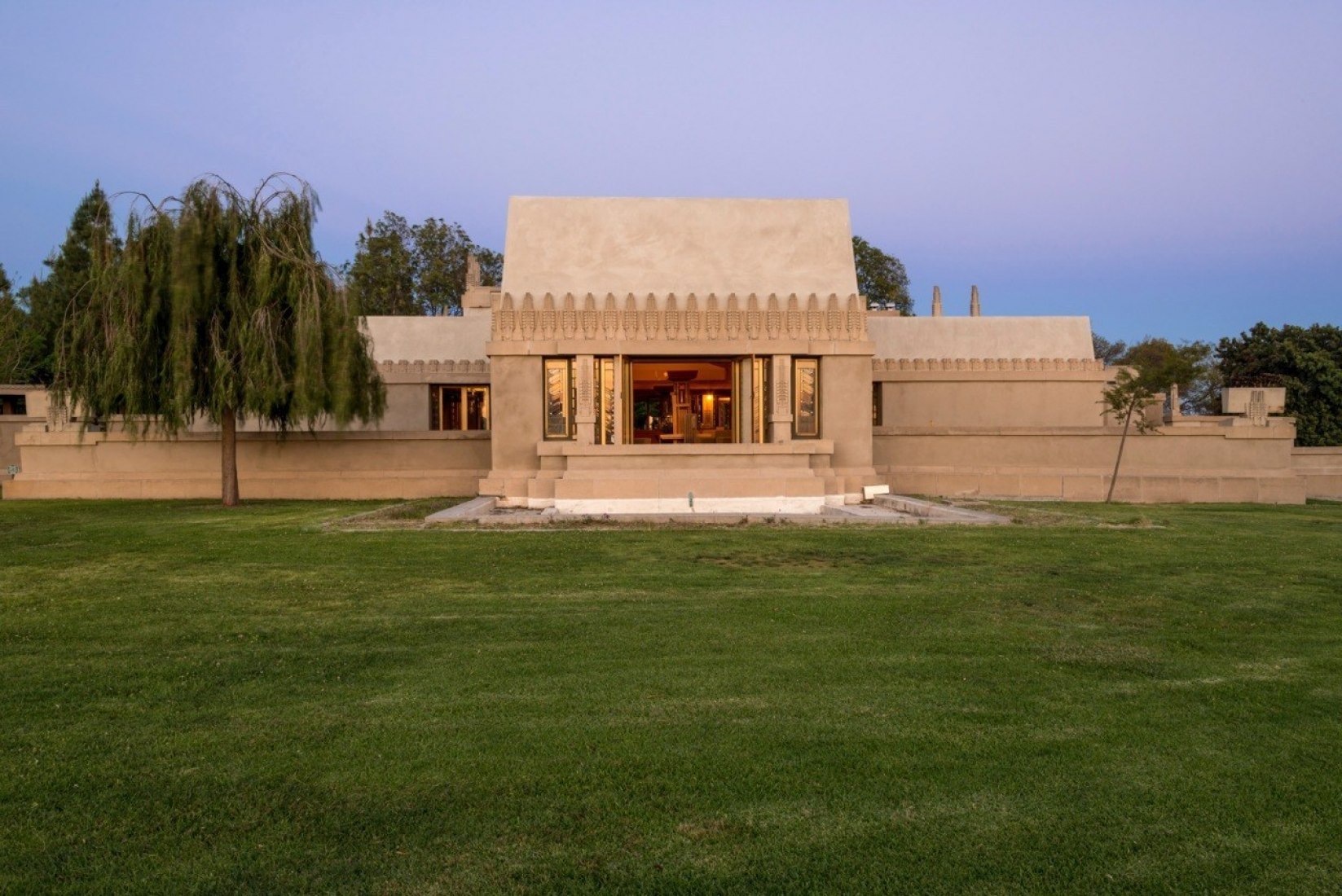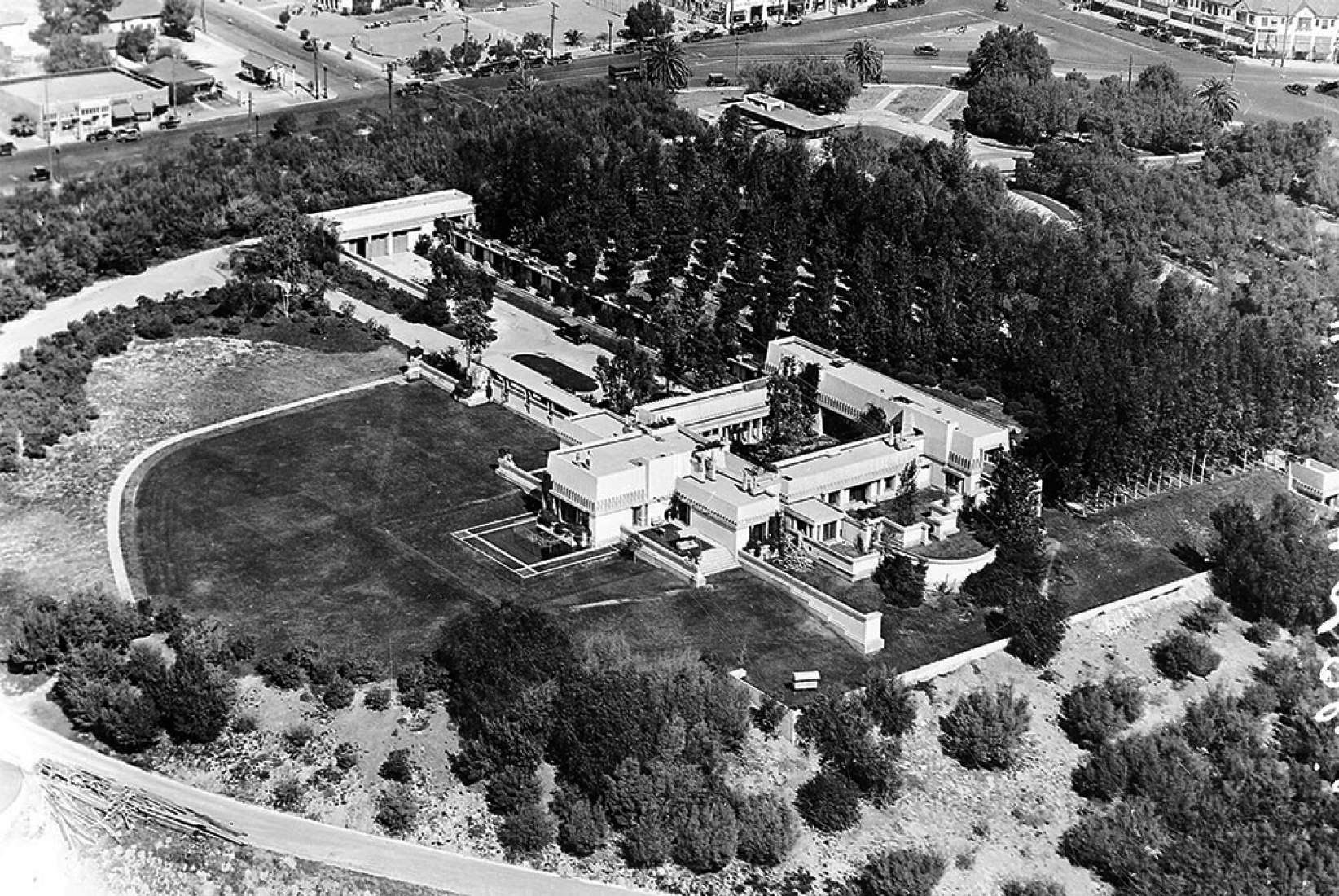Table Of Content

Herr said his favorite area of Hollyhock House is the colonnade along the north side of the inner courtyard. "It's lovely in the afternoon with the sunlight streaming through the columns and equally beautiful at night with the restored lighting." Following a multimillion-dollar restoration, Hollyhock House celebrated its official reopening in February 2015.

Surprisingly Romantic Places in Los Angeles

Barnsdall Art Park has accessible parking spaces on top of the hill in the Hollyhock House motor court, located between the Visitor Center (former garage) and the house. There are additional accessible parking spaces located on the Upper Road. The Barnsdall Art Park Foundation has partnered with the Los Angeles Parks Foundation and the City of Los Angeles Department of Recreation and Parks to restore and sustain Barnsdall Art Park’s historic olive grove, which was established in the 1890s. The Junior Arts Center offers art programs to children and youth aged 3–18.
Residence A
Aline Barnsdall, a native of Bradford, Pennsylvania and heiress to an oil fortune, was led by her interest in the future of the American stage to Chicago, Illinois, where she co-directed an experimental theatre company. While in Chicago, she met the equally unconventional Frank Lloyd Wright, whose recently completed Midway Gardens she admired. Couples lounge on blankets on the lawn, children work with clay in an art room, and curators discuss the latest exhibition at the Municipal Art Gallery. Aline’s original dream of an artistic utopia has in many ways become a reality. Located atop Olive Hill, this quaint park offers sweeping vistas of the Hollywood Sign and Griffith Observatory, and is home to Frank Lloyd Wright’s Hollyhock House. It was the brainchild of the brilliant heiress Aline Barnsdall, whose dream of an artistic commune in the midst of Los Angeles was never fully realized.
See a live performance, film screening or lecture at the Barnsdall Gallery Theatre
Only with its restored landscape, has the recently restored building realized its unique glory. After her death in 1946, Barnsdall’s property was subdivided into several commercial and residential parcels. BGT also presents a variety of community events in the space, including free programs, such as the Independent Shakespeare Company, Music Summer Camps by the Silverlake Conservatory of Music, and many annual festivals, including the Thai Festival and Artwallah.
A 12-Stop Road Trip of Frank Lloyd Wright’s Most Surprising Designs
Before long, however, their artistic endeavours expanded beyond the dedicated music studio and artist workrooms inside their home and began encroaching upon their living space. The couple turned to the barn adjacent to their farmhouse, and with the help of the VELUX Group in Denmark, remodeled the existing building into a multi-purpose artists’ workspace. Two hours north of New York City, an unusual barn emerges from a hill just off a country road. Its black siding and bright-red window frames hint at the imaginative playground inside. This space, with its rope-railed catwalk and indoor tent, is just one element of the multifaceted getaway architecture and design firm BarlisWedlick Architects designed for fund manager Ian Hague. Hollyhock House is committed to accommodating the diverse needs of our visitors.
Hollyhock, Aline Barnsdall House
The California Arts Club became the first tenant and leased the property until 1942. In 1945, Dorothy Clune Murray used the house as headquarters for the Olive Hill Foundation for Cultural Research, and hired Lloyd Wright for renovations; her foundation remained there until 1956. In 1963, the Hollyhock House was declared a City Landmark, and in 1971, the house and Residence A were listed on the National Register of Historic Places. From 1974 to 1976, Lloyd Wright restored the house to its original condition, based on his memory of the 1921 design. After a major multi-phase restoration based on photographs and available documentation, the Hollyhock House now appears as it did between the years 1921 and 1927, and is operated as a museum by the City of Los Angeles Department of Cultural Affairs. Griffith's ‘Intolerance.’ Four years later, on April 4, 1920, an estimated crowd of 10,000 assembled around Olive Hill for Hollywood's first Easter sunrise service with the Los Angeles Philharmonic—a tradition that moved the following year to the Hollywood Bowl,” Masters explains.
Celebrate Extraordinary LA Women - Discover Los Angeles
Celebrate Extraordinary LA Women.
Posted: Sat, 24 Feb 2024 00:20:25 GMT [source]
An interesting feature is the mitered glass corners at the windows; an early idea Wright later used at Fallingwater. At Powisset Farm, a 106-acre swath of land that has been cultivated for some three centuries, it’s also about striking the right mix of tradition and technology. Previously owned by Boston Brahmin Amelia Peabody, the farm is now a model of the Community Supported Agriculture movement, provisioning more than 300 member families with fresh fruit and vegetables.
Community
The property’s significance extends to its status as both a National Historic Landmark and as Los Angeles Historic Cultural Monument #33. Phase 1 of the Residence A restoration project began in 2017 and cost more than $5 million from various sources including City dollars, funding from the former Community Redevelopment Agency, and the National Park Service. As part of Phase 1, exterior finishes were meticulously recreated, structural and seismic work was completed, and building systems were improved. The planned Phase 2 will provide critical interior detailing, furnishings, finishes, and infrastructure repair, as well as exterior landscaping and ADA‐commensurate hardscaping needed to re-open the site to the public. Variously described as Mayan, Aztec, Asian, Egyptian, and as a “California Romanza” by the architect himself, the Hollyhock House was a transitional structure for Wright.
Hollyhock House
Indeed, her dislike of the Hollyhock House was such that she decided not to complete the artists’ colony. In 1923, she offered the Hollyhock House and 11 acres of her property to Los Angeles to serve as a public library and park. The city initially rejected her offer, but in 1927 changed its mind and accepted the land and its buildings for an art park dedicated to the memory of Aline’s father, Theodore Barnsdall.
SAH Archipedia tells the story of the United States through its buildings, landscapes, and cities. This freely available resource empowers the public with authoritative knowledge that deepens their understanding and appreciation of the built environment. In July 2019, Frank Lloyd Wright's Hollyhock House, an iconic architectural masterpiece in the heart of Barnsdall Park, was added to the UNESCO World Heritage List.
The house was designated as a National Historic Landmark in 2007 and has been nominated as a UNESCO World Heritage Site. While the interior is remarkable throughout, the living-room hearth—topped by a skylight and integrating a seemingly floating hearthstone, bas-relief stone mural, and wood-slat screen—provides a particularly dramatic focal point. "Hollyhock House is one of Los Angeles’ greatest cultural treasures — a landmark elegantly rendered from Frank Lloyd Wright’s imagination and Aline Barnsdall’s vision," said then-Mayor Eric Garcetti.
In 1915 she commissioned Wright to help her develop an innovative theatrical community on the nation's western cultural frontier. The site plan was based on the gridded spacing of the existing olive grove’s 1225 trees. Oil heiress Aline Barnsdall commissioned the house as the centerpiece of a cultural arts complex on Olive Hill, which was to include a major theatre, cinema, artist residences, and commercial shops. For Hollyhock House, her personal residence, Barnsdall asked Wright to incorporate her favorite flower, the hollyhock, into the design.
No comments:
Post a Comment